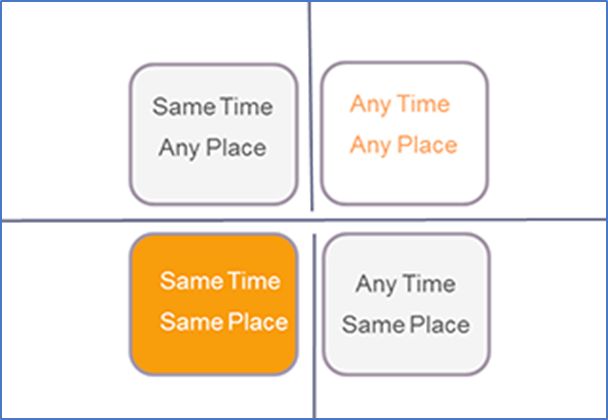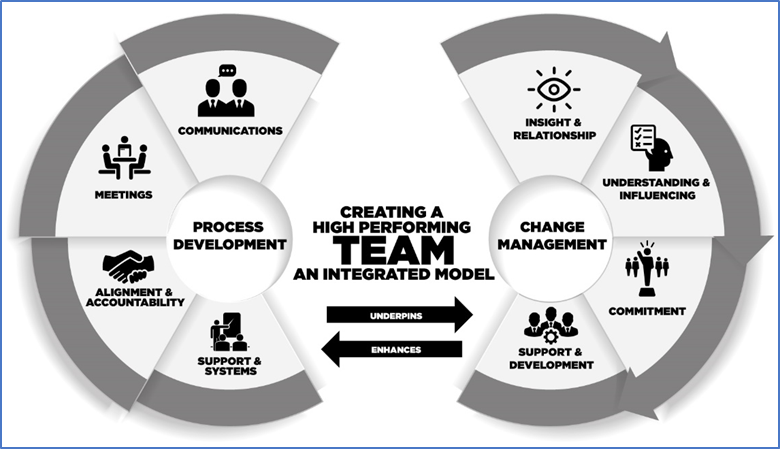The Ever Changing Shape of Teams
High Performing Teams (aka HPTs) have been consistently in the top leadership and management challenges for the last twenty years. During this period, the dynamics of teams has radically evolved in several significant ways including:
- Self-Managed/Collective Leadership Teams where the leadership role is distributed beyond a single team member
- Cross Organizational Collaboration where different disciplines or functions within the organization and/or different organizations participate in a single team
- Virtual/Distributed/Mobile Teams where at least some (sometimes all) team members are not co-located for meetings and day-to-day team operations
- Massive Teams often enabled by social technologies such as LinkedIn or Facebook where hundreds and thousands of individuals work, campaign or learn around broadly common goals within 'virtual communities'
Using Simulations to Learn About Teams
There are 3 different (and complimentary) ways you can use business simulations to learn about teams:
- Dynamic Team Learning as a team (or virtual team)
- Topical Team Learning as an individual
- Dynamic and Topical Learning as a team
Lets now look briefly at each of these in turn.
OPTION 1 - DYNAMIC: Play any Topic as a Team (Or Virtual Team)
If you play any business simulation as a team, irrespective of the topic, you will encounter all the tensions of team dynamics, team leadership, conflict and collective decision-making. This is Collective Dynamic learning about team.
This case study describes how the COMPETE Business Acumen Simulation was used as a vehicle to explore the dynamics of teams compounded by all the complications of working as part of a virtual team where team members may be separated by time, place, reporting lines and culture (see Martini Model of Virtual Teams below).
So, for example, the teams played round 1 'as normal' without any restrictions but when they came to play round 2 they were advised that no verbal communications were now allowed between team members which meant that all team dialogue had to be via Post-It notes and a shared flipchart. Then in rounds 3 and 4 further virtual team complications were introduced such as distractions to represent local versus virtual reporting lines and different cultural values between team members of different nationalities.
It is also possible to play a simulation like COMPETE using real virtual technologies such as Webex or Adobe Connect or even Skype to accelerate team member exposure to the unforseen problems of virtual team working in a safe environment before the team members encounter them in live and business critical work.

The Martini Model of Virtual Teams
OPTION 2 – TOPICAL: Play a Team-Based Topic as an Individual
Option 2 is almost the reverse scenario from Option 1 – Individual Topical learning about team. Here you are playing a simulation as an individual (not as a team) but the topic of the simulation is team-specific. A good example of this would be having a cohort of players individually and separately playing CHAPTER, a High Performing Team simulation.
As the participants play the CHAPTER simulation they have to make decisions to build their team’s performance both in terms of personal change management and team process development (see RaceTrack HPTs Model below). Each participant sees their own personal performance dashboard as they progress. Participants They also have the opportunity to engage with the built-in virtual facilitator within the simulation.
Each individual’s score is recorded during and after the simulation which allows a facilitator to identify both individual learning points and those which are impacting more than one member of the learning cohort. In fact the facilitator is also able to select any participant and “action-replay” their decisions for the entire simulation as part of a debrief/coaching discussion.
The facilitator can also bring groups of players together in face to face or virtual meetings after one or more rounds of the simulation is completed for discussion and experience sharing as an effective means of informal or social learning.

Integrated (RaceTrack) Model of High Performing Teams
OPTION 3 - DYNAMIC & TOPICAL: Play a Team-Based Topic as a Team
Option 3 is a combination of Option 1 and Option 2 where it is possible to combine the aggregated benefits of both approaches from a single exercise. For example, in the CREW Team Leadership Simulation teams of players are given the opportunity to collectively play the role of the team leader of a small operational team consisting of 6 team members.
Each round the team, collectively acting as the operational team leader, must schedule their simulation team members to appropriate work projects at the same time as dealing with all the personal, skills, attitudinal and team issues which arise. This is the Topical layer of learning about teams.
The simulation participants must also form themselves into an effective team and reach agreement on their decisions each round on a timely basis resolving conflicts as they go. This is the Dynamic layer of learning about team. This 'double layer learning' can be highly effective but does require good planning, appropriate settings and skilled facilitation to ensure it deliver both sets of learning benefits.